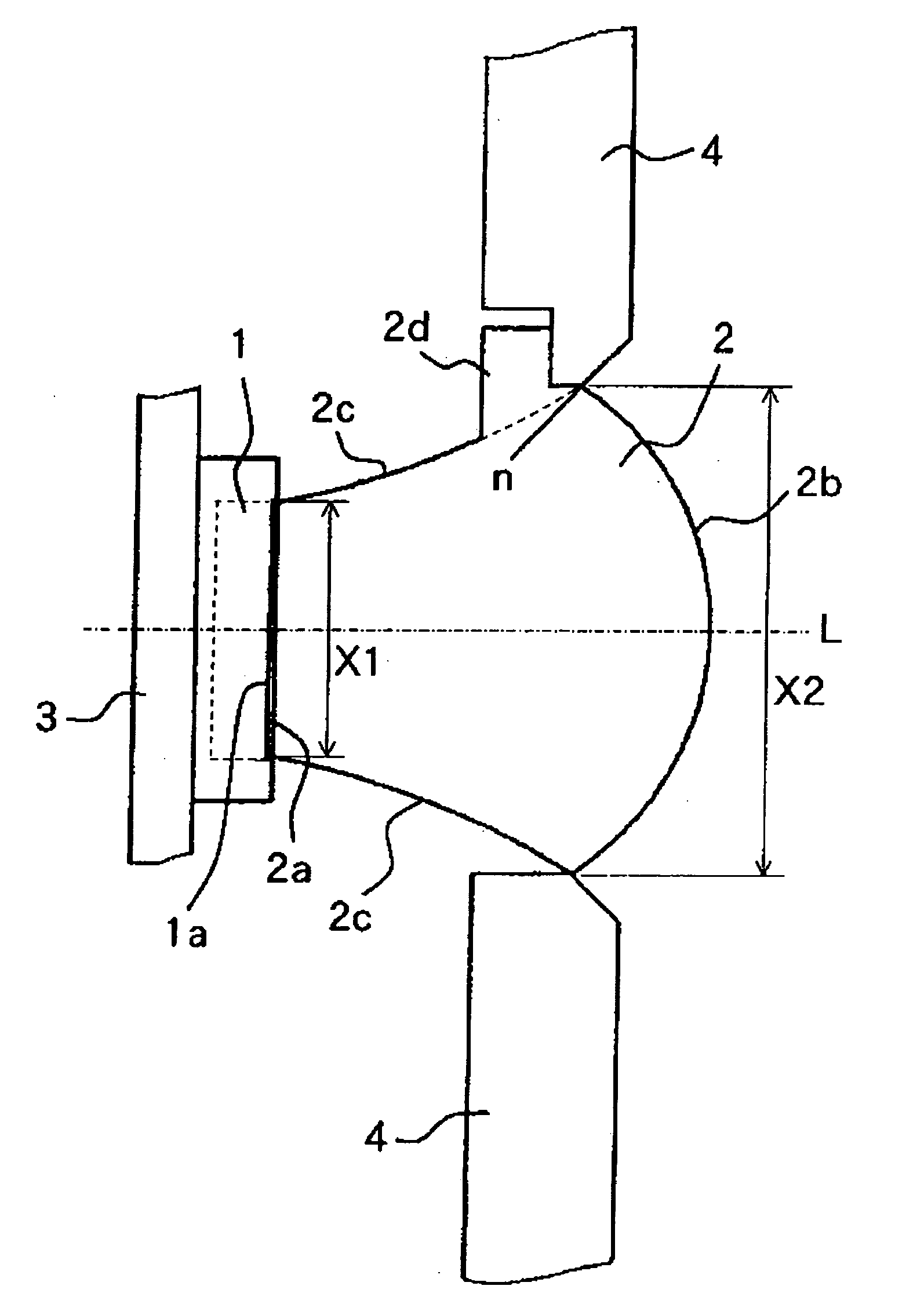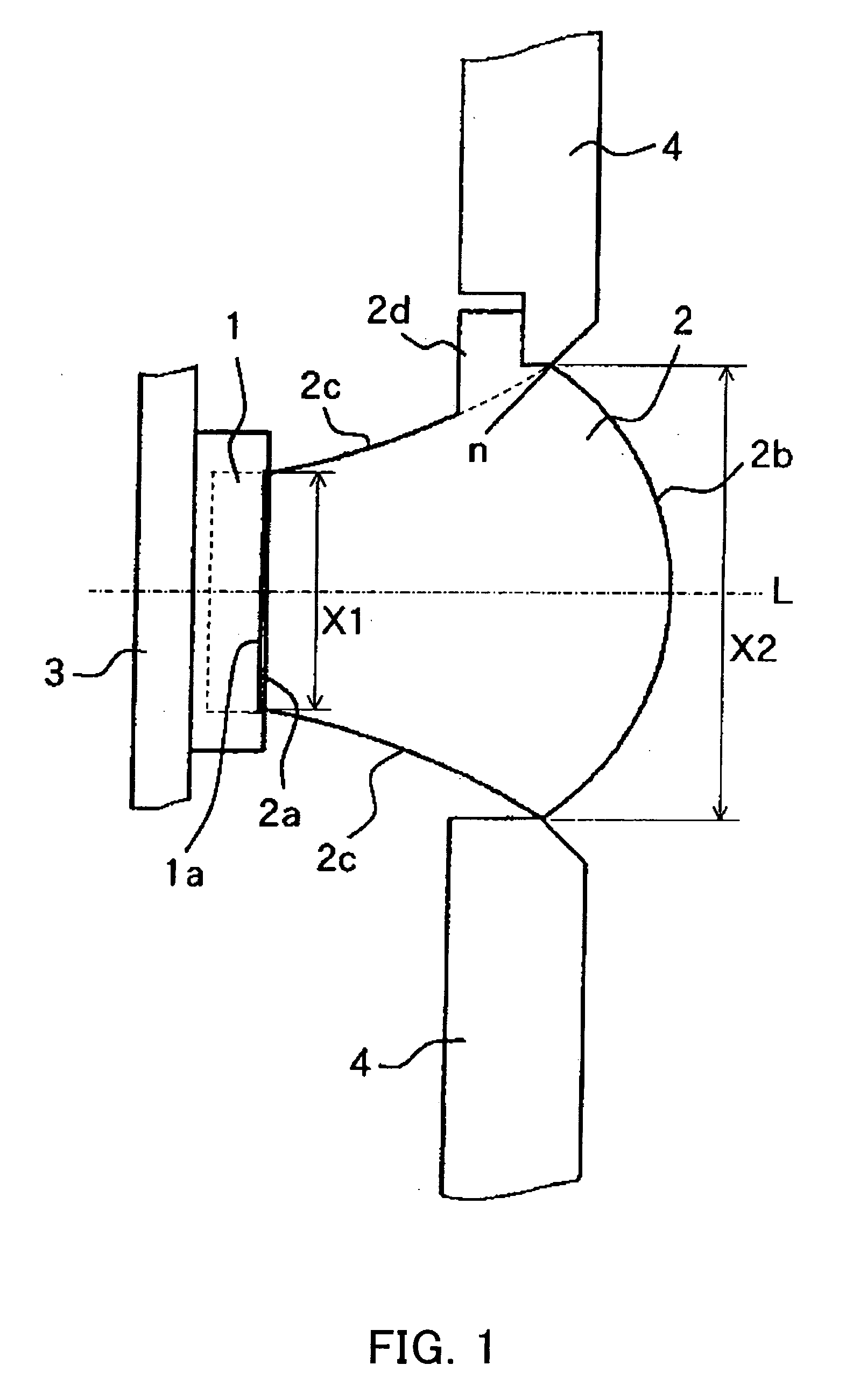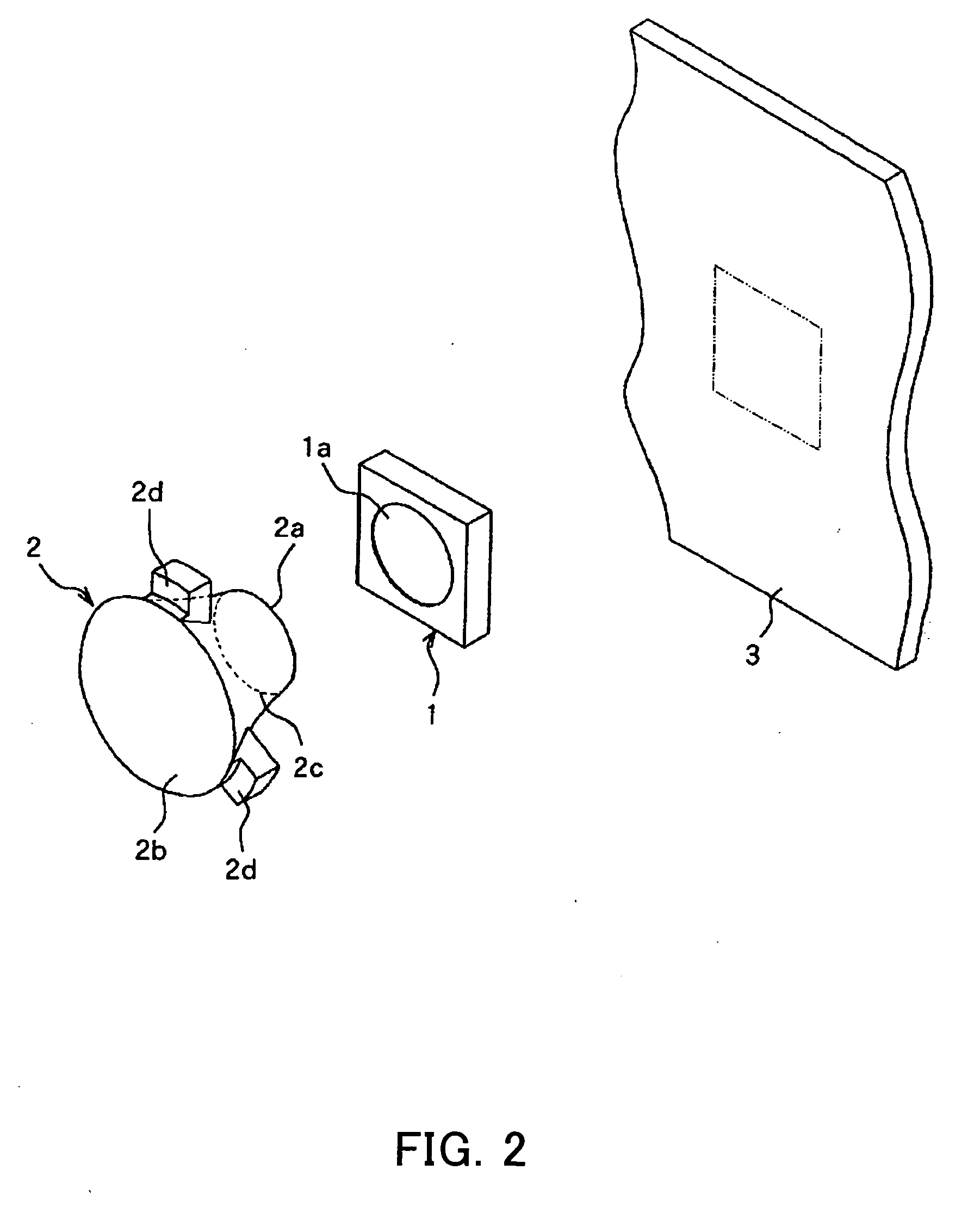Illumination apparatus and image-taking apparatus
a technology which is applied in the field of illumination apparatus and imagetaking apparatus, can solve the problems of reducing the irradiation efficiency of illumination light, increasing the size or cost of the resulting illumination apparatus, and difficult to ensure sufficient illumination in peripheral areas other than the central area, so as to reduce uneven color, efficient condense light, and reduce uneven effects
- Summary
- Abstract
- Description
- Claims
- Application Information
AI Technical Summary
Benefits of technology
Problems solved by technology
Method used
Image
Examples
embodiment 1
[0043] FIGS. 1 to 7 are diagrams for explaining an illumination unit (illumination apparatus) of Embodiment 1 of the present invention and a video camera (image-taking apparatus) having the illumination unit. The illumination unit of Embodiment 1 can efficiently condense luminous flux emerging from a minute surface light source such as an LED as described below.
[0044]FIG. 1 is a longitudinal section view showing the structure of the illumination unit of Embodiment 1. FIG. 2 is a perspective view showing the outer appearance of main optical systems of the aforementioned illumination unit. FIG. 3 is a front view showing an optical member disposed inside the aforementioned illumination unit.
[0045]FIGS. 4A to 4I are diagrams for explaining the light distribution characteristic of the aforementioned illumination unit and show the traces of luminous flux incident on the light source from the side of light irradiation. FIGS. 4A to 4I are the diagrams obtained when the angle of the aforem...
embodiment 2
[0101] FIGS. 8 to 14 are diagrams for explaining an illumination unit which is Embodiment 2 of the present invention. The illumination unit of Embodiment 2 employs an LED unit which has a plurality of LED elements emitting different colors arranged in a single package.
[0102]FIG. 8 is a longitudinal section view showing the structure of the illumination unit of Embodiment 2. FIG. 9 is a perspective view showing the outer appearance of the structure of the illumination unit of Embodiment 2. FIG. 10 is a front view showing the LED unit for use in Embodiment 2.
[0103]FIG. 11 shows the distribution of the irradiation ranges of the respective LED elements relative to a required irradiation range when a condenser lens (the condenser lens 22 shown in FIGS. 5A to 5G) is disposed for condensing in front of the LED unit shown in FIG. 10 (on the side of light emergence).
[0104] FIGS. 12 to 14 are diagrams for explaining how luminous flux emerging from one LED in the LED unit is condensed by ea...
embodiment 3
[0143] FIGS. 15 to 18 are diagrams for explaining an illumination unit which is Embodiment 3 of the present invention. The illumination unit of Embodiment 3 is optimal especially when a white-color LED obtained by combining a blue-color LED with a phosphor is used as a light source.
[0144]FIG. 15 is a longitudinal section view showing the structure of the illumination unit of Embodiment 3. FIG. 16 is provided by adding, to the longitudinal section view of FIG. 15, the light ray traces of a component at a smaller angle with respect to an irradiation optical axis of luminous flux emerging from the center of the LED. FIG. 17 is provided by adding, to the longitudinal section view, the light ray traces of a component at a larger angle with respect to the irradiation optical axis of the luminous flux emerging from the center of the LED.
[0145]FIG. 18 is a section view for explaining the structure of the white-color LED. FIG. 19 is a longitudinal section view showing the structure of an i...
PUM
 Login to View More
Login to View More Abstract
Description
Claims
Application Information
 Login to View More
Login to View More - R&D
- Intellectual Property
- Life Sciences
- Materials
- Tech Scout
- Unparalleled Data Quality
- Higher Quality Content
- 60% Fewer Hallucinations
Browse by: Latest US Patents, China's latest patents, Technical Efficacy Thesaurus, Application Domain, Technology Topic, Popular Technical Reports.
© 2025 PatSnap. All rights reserved.Legal|Privacy policy|Modern Slavery Act Transparency Statement|Sitemap|About US| Contact US: help@patsnap.com



